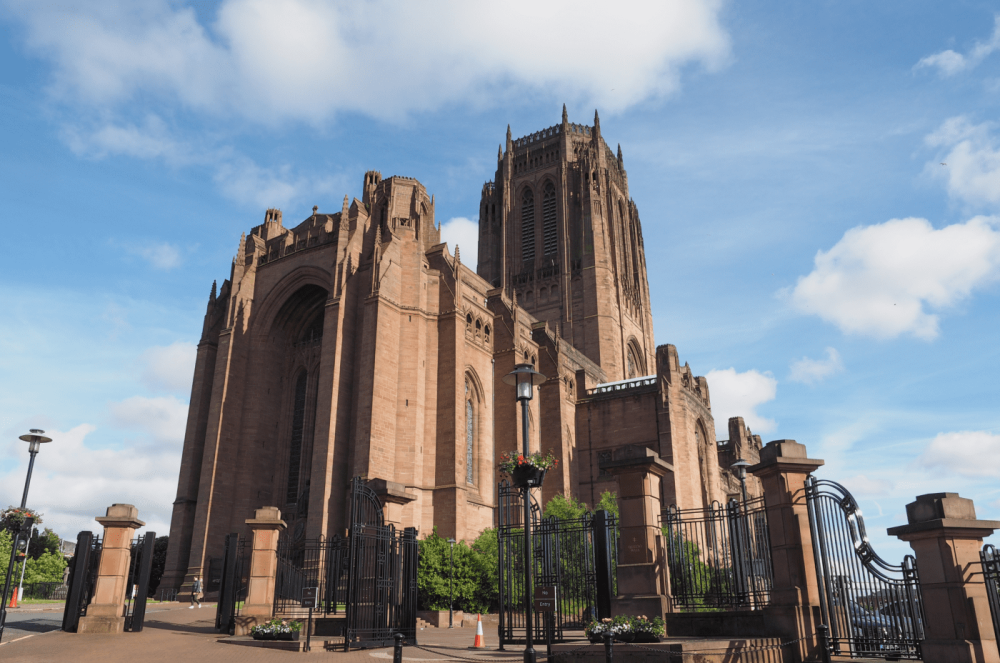

Liverpool Cathedral, an iconic symbol of the city of Liverpool and the United Kingdom, has been a beacon of spirituality and architectural magnificence since its inception. The history of Liverpool Cathedral as a tourist destination is closely tied to its construction and standing as one of the greatest architectural wonders in Britain.
Designed by the young architect Giles Gilbert Scott in 1904, the foundation stone was laid by King Edward VII in the same year, marking the beginning of over 74 years of construction. Although the cathedral was consecrated in 1924, it was not fully completed until 1978. Even during its construction, the sheer size and ambition of the project attracted visitors and curiosity from both locals and those traveling from afar.
As the largest cathedral in Britain and the fifth largest in the world, its religious significance as the seat of the Bishop of Liverpool and a central place of worship for the Anglican community made it an important destination for pilgrims and religious tourists.
The cathedral's towering presence, featuring the world’s heaviest and highest (219 ft) peal of bells and the monumental Great West Window, solidified its status as a must-visit site. The architecture itself, a remarkable blend of Gothic revival styles with modern sensibilities, commanded global attention. Visitors today continue to marvel at its stunning interior and intricate details, which includes the grandeur of the Lady Chapel and the breathtaking views from the Vestey Tower.
Over the years, Liverpool Cathedral has improved visitor experiences through developments such as the opening of the Tower Experience, which allows tourists to enjoy expansive views of the city, and the interactive 'Great Space' tour. The addition of the Welsford Restaurant and the Cathedral Shop has also broadened its appeal as a tourist location beyond simply its religious and architectural draw.
Liverpool Cathedral is also famous for hosting a variety of events throughout the year, including concerts, exhibitions, and educational programmes, which attract a diverse range of visitors. Its role in popular culture, including films and television series, has further bolstered its popularity among tourists.
In recent years, the trend of combining historical tourism with contemporary experiences has been evident in the activities surrounding the cathedral. With Liverpool’s designation as a UNESCO World Heritage site and the city’s overall cultural renaissance, tourism at Liverpool Cathedral has seen a significant uptick. Visitors are equally interested in the cathedral's history as they are in the modern art installations and events that take place within its hallowed halls.
To keep up with the latest trends in tourism, Liverpool Cathedral has an active online presence, offering virtual tours and detailed historical information to attract visitors from around the world. This digital outreach strategy has become more relevant in the wake of global events like the COVID-19 pandemic, which has necessitated virtual and remote tourism experiences.
In conclusion, the history of tourism at Liverpool Cathedral is a story of continuous evolution, blending the allure of historical architecture and spiritual significance with modern advancements in visitor engagement. It remains one of the United Kingdom's most visited and beloved historical sites.